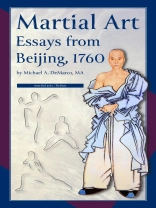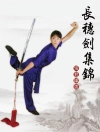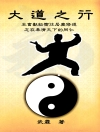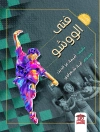The themes in this book-drawn from Chinese history, culture, and martial arts experience-are entwined in a fictional narrative to animate events envisaged to have occurred during the mid-eighteenth century. From the outset, a thin veil separates fact from fiction. Our story starts with a discovery.
While conducting research at the Vatican Library on the Jesuit missions in China, two scholars find a folder of papers written in Chinese among documents belonging to Giuseppe Castiglione (1688-1766), a painter at the royal court in Beijing. The papers turn out to be written by a fellow court painter, Yang Mingbin (c. 1664-1765). Yang’s handwritten essays provide revelations vital for understanding the ingenuity of Chinese martial arts.
Yang’s text is organized under sixty-four subheadings. The author elucidates theory and practice methods in a fashion unlike any other writings on this subject. This is a rare early text written during a transitional period for martial arts. It is the time when the Qing Dynasty (1644 to 1912) was at its peak of cultural splendor and expanding its borders by military expeditions. Cannons and smaller firearms show the Western influence, but traditional martial arts were ubiquitous in the village, province, and national levels.
Master Yang offers fascinating reading on all aspects of the Chinese fighting traditions. He places great emphasis on the importance of the ‘martial arts family’ and the role of secrecy in lethal arts. The arts are also adapted for health and entertainment. All reflect an infusion of philosophy and practices from Buddhism, Daoism, and Confucianism. How one thinks affects how one practices martial arts.
Yang describes the qualities associated with different skill levels, from beginner to most advanced. As he does this, we learn secrets that set forth key ways for improving defensive and offensive applications. These topics include body alignment, coordination, spontaneity, naturalness, balance, distancing, relaxation, and power. The same principles apply to bare-hand and weapons practice, as well as martial arts for health. Yang’s learning methodology for studying martial arts can be useful in other areas, as in his work as a master painter at court.
สารบัญ
Preface
Foreword
Essays: Sacred Space; Unity in Diversity; Inspiring Factors; Levels of Skill; The Paradox of Movement; Bathing in Stillness; Standing on One Leg; One Step at a Time; Slow versus Fast; Magic Knuckles; Split the Globe; Straight at an Angle; Pushing Distance; Footwork as Brushwork; Shoulder to Shoulder; Practical Techniques, Proper Forms; The Attack Makes the Defense; Sources of Tension; Better Vision; A Monitoring Touch; One Technique, Multiple Applications; Bellow Breathing; Two-Way Tension; No Resistance, No Pressure; Right, Wrong, Variation; Impressive Movements; Mirrorlike Mind; The Martial Family; Daoist Philosophy; Daoist Quest for Immortality; Finding a Master, Finding a Disciple; Physical Connections; The Body’s Architectural Design; Maintaining and Improving Health; The Organic Pattern; Weapons and Empty-Hand Practice; The Teacher’s Effects; The Learning Continuum; Moving from Time to the Timeless; Telltale Signs; Inspiration; Spontaneous Naturalness; Help Your Attacker; Waterways; Seeing Targets; Elbows Moving the Wrong Way; Techniques and Distance; Mental and Optical Illusions; Power Behind the Punch; Principles for Fighting and Health; Explosive Kicks and Strikes; Personality and Personal Style; Solo Routines and Self-Defense; Teacher-Disciple Relationship; Manchu Military; Laws of Boxing; Angles of Defense and Offense; Being Analytical and Intuitive; Pleasing the Eyes; Wave Currents; Meditation: Training the Mind; Martial Ingenuity; Martial Arts, Religion, and Healing; Experiment, Test, Prove
Afterword
Glossary
Index
เกี่ยวกับผู้แต่ง
Michael De Marco (MA Asian studies) began studying a Chinese-Indonesian hybrid martial art in 1965 and later focused on taijiquan. Studying and working in many Asian countries provided in-depth experience in martial traditions. For over twenty years, Mike published the peer-reviewed quarterly Journal of Asian Martial Arts and continues publishing anthologies and books. He has also consulted and appeared in television documentaries about martial arts that were aired on the Discovery Channel, Arts & Entertainment, The History Channel, and The Learning Channel.












